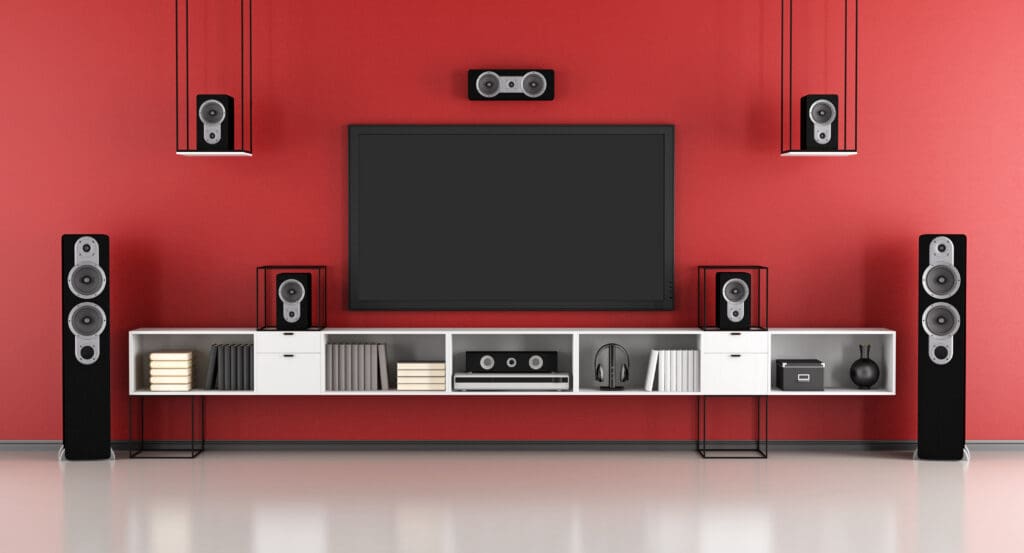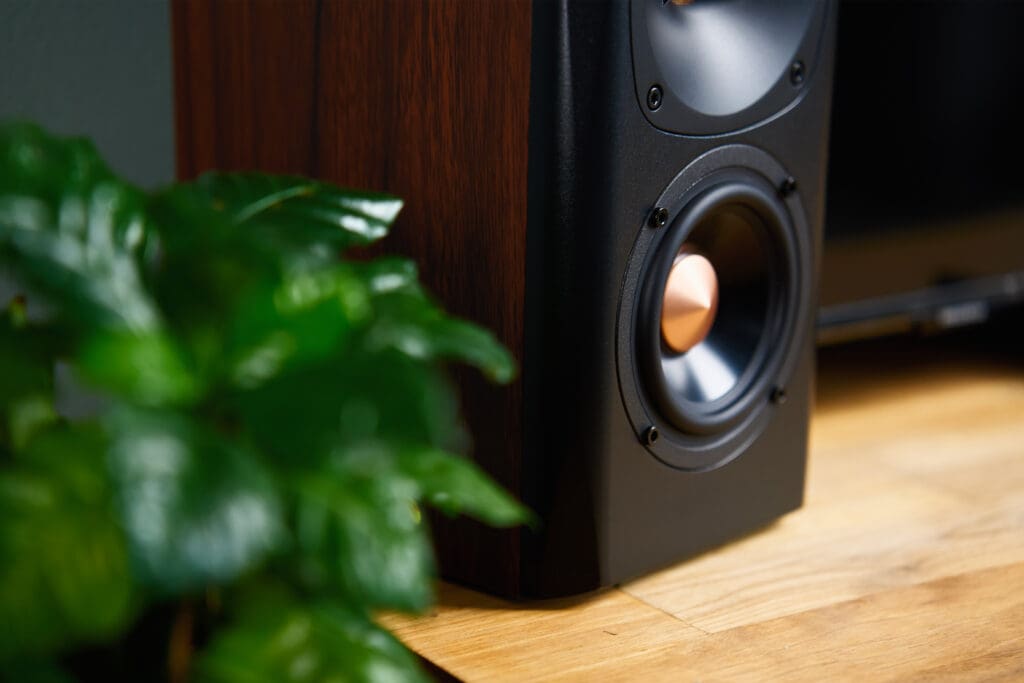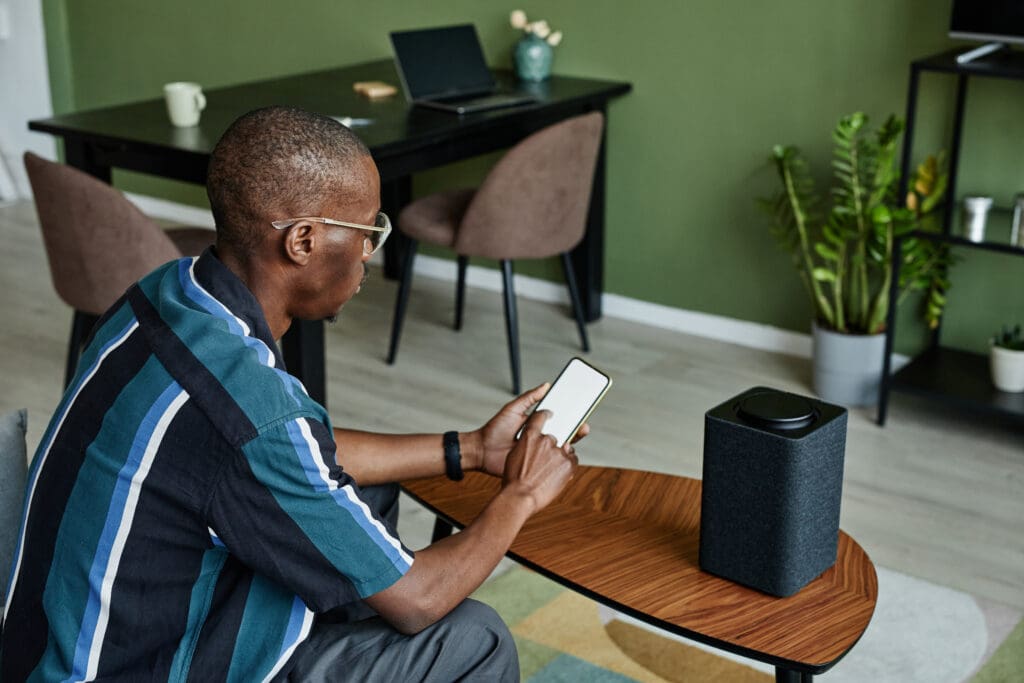Key Highlights
- Elevate your entertainment experience with immersive audio that brings movies, music, and games to life.
- Explore the fundamentals of home audio systems to make informed decisions about the best setup for your needs.
- Discover the latest advancements in home audio technology, including smart home integration and cutting-edge surround sound.
- Learn expert tips on speaker placement and audio calibration to optimize your listening environment.
- Ensure lasting performance with routine maintenance practices and effective troubleshooting techniques.
Introduction
In an era where entertainment takes center stage, turning your living space into a stunning home theater has never been easier. Whether you’re a movie buff, a music lover, or someone who enjoys crisp sound for podcasts and audiobooks, a well-designed home audio system can take your listening experience to the next level.
Understanding the Basics of Home Audio Systems

At its core, a home audio system is designed to deliver high-fidelity sound reproduction, surpassing the limitations of built-in TV speakers or basic audio setups. It comprises various components that work harmoniously to create an immersive sonic environment. Unlike a simple Bluetooth speaker setup, a dedicated home audio system offers greater control, power, and versatility, allowing you to enjoy your favorite entertainment with enhanced clarity, depth, and richness.
From the pulsating bass of action movies to the subtle nuances of classical music, a quality home audio system unlocks a wide spectrum of sonic details often lost with standard audio setups. Whether you’re looking to create a dedicated home theater or simply enhance your everyday listening experience, understanding the essentials of home audio systems is crucial in making informed decisions that cater to your specific needs and preferences.
The Components of a High-Quality Home Audio Setup
A typical high-quality home audio system comprises several key components, each playing a vital role in delivering exceptional sound:
- Source Devices: These are the origins of your audio content, ranging from streaming devices like smartphones, TVs, and PCs to physical media players such as CD players, turntables, and Blu-ray players.
- Amplifier: The powerhouse of your audio system, an amplifier receives audio signals from your source devices and amplifies their strength, providing the necessary power to drive your speakers effectively.
- Speakers: Responsible for converting amplified audio signals into audible sound waves, speakers come in various shapes, sizes, and configurations to suit different room sizes and listening preferences. Common speaker types include sound bars, bookshelf speakers, floor-standing speakers, and subwoofers.
How Different Home Audio Systems Enhance Your Listening Experience
Different home audio systems offer distinct advantages that can significantly elevate your listening experience. For instance, a stereo system featuring two speakers strategically positioned in your room creates a well-defined soundstage, providing a sense of depth and realism to your music. The separation of sound between the left and right channels enhances instrument placement and overall musical clarity.
Surround sound systems, commonly used in home theaters, take immersion to another level. By incorporating multiple speakers placed strategically around your listening area, surround sound systems envelop you in a cocoon of audio. This setup recreates a more realistic and engaging cinematic experience, with sounds emanating from different directions, as if you were in the heart of the action.
Furthermore, a dedicated home audio system often includes a subwoofer, a specialized speaker designed to reproduce low-frequency sounds, adding weight and impact to bass-heavy music, movie soundtracks, and video games.
Choosing the Right Home Audio System for Your Space
Selecting the ideal home audio system for your space involves considering various factors, ensuring a seamless blend of performance, aesthetics, and functionality. Begin by assessing your listening habits and preferences. Are you a dedicated audiophile seeking the utmost fidelity, or do you prioritize convenience and ease of use? Determining your primary use case, whether it’s for critical music listening, immersive movie nights, or casual background music, will guide your decision-making process.
Additionally, consider the size and layout of your room. A compact sound bar might suffice for a smaller space, while a more elaborate multi-speaker setup may be better suited for a larger living room or dedicated home theater. Balancing your audio aspirations with practical considerations ensures a satisfying and enjoyable audio experience tailored to your unique needs.
Assessing Your Room’s Acoustics and Layout
Understanding your room’s acoustics is paramount in optimizing your home audio setup. Room size and shape significantly influence sound wave reflection, impacting the clarity and balance of your audio. Hard surfaces, such as bare walls and windows, tend to reflect sound waves, potentially leading to echoes and a distorted soundstage.
For smaller living rooms, a well-positioned soundbar might suffice in delivering a balanced audio experience. However, larger spaces might benefit from a more strategic speaker placement. Consider placing bookshelf speakers on stands or wall mounts, ear level, and equidistant from your primary listening position. This helps create a focused soundstage, minimizing reflections and ensuring an immersive audio experience.
Experiment with speaker placement and utilize acoustic treatment options like carpets, curtains, and bass traps to minimize unwanted reflections. Fine-tuning your room’s acoustics goes a long way in enhancing sound quality and creating a harmonious listening environment.
Wired vs. Wireless Systems: Pros and Cons
When choosing between wired and wireless systems, weigh the pros and cons of each option carefully:
Wireless Systems:
- Pros: Easy installation, clutter-free setup, greater flexibility in speaker placement. Technologies like Bluetooth and Wi-Fi enable seamless streaming from various devices.
- Cons: Potential for connectivity issues, latency, and sound quality compromises compared to wired systems.
Wired Systems:
- Pros: Consistent audio quality, no wireless interference, ideal for critical listening and home theater enthusiasts seeking the most immersive experience.
- Cons: Installation complexity, cable management challenges, and limited speaker placement flexibility.
The Latest Trends in Home Audio Technology

Home audio technology is constantly evolving, driven by innovation and a desire for increasingly immersive and convenient listening experiences. Advancements in wireless connectivity, voice control, and audio processing technologies have revolutionized how we enjoy entertainment at home. Today’s home audio systems seamlessly integrate with our smart devices, offering unparalleled control, personalization, and access to a vast library of audio content at our fingertips.
Smart home integration and cutting-edge surround sound technologies are at the forefront of these advancements, transforming living spaces into personalized entertainment hubs. Embracing these innovations enhances not just our audio experiences, but also the overall comfort and convenience of our modern homes.
Smart Home Integration with Audio Systems
The integration of smart home technology with audio systems has revolutionized how we interact with and control our listening experience. Voice assistants such as Google Assistant and Amazon Alexa have become integral parts of many modern homes, offering unparalleled convenience in managing various devices. With voice control, you can effortlessly play, pause, adjust the volume, switch between music tracks, and even control audio playback in different rooms, all with simple voice commands.
Moreover, smart home integration enables you to seamlessly incorporate your audio system into your existing smart home ecosystem. You can group speakers together, adjust settings, and create personalized listening schedules that align with your daily routines.
Imagine waking up to your favorite playlist gently filling your bedroom, transitioning to the kitchen as you prepare breakfast, and finally accompanying you to your living room for a relaxing evening. Smart home integration makes these scenarios a reality, enhancing both the functionality and enjoyment of your audio setup.
Advances in Surround Sound Technology
Surround sound technology has made remarkable strides, transporting cinematic audio experiences into our homes. The latest advancements, such as Dolby Atmos, introduce a new dimension of height to surround sound, creating a truly enveloping audio sphere. Unlike traditional surround systems that focus primarily on horizontal sound placement, Dolby Atmos adds overhead speakers or specialized upward-firing drivers, enabling sound designers to precisely position sounds in a three-dimensional space.
This technological leap results in a captivating sonic experience. Whether it’s a helicopter soaring overhead or rain cascading from above, Dolby Atmos adds an unparalleled level of realism and immersion to movies, TV shows, and even certain music tracks mixed specifically for this technology.
As home theater setups become increasingly sophisticated, these immersive audio formats transform your living room into a true entertainment sanctuary, making you feel like you’re right in the middle of the action.
Setting Up Your Home Audio System for Optimal Sound
Once you’ve invested in a quality home audio system, proper setup is essential to unlock its full sonic potential. Speaker placement and audio calibration are crucial aspects that significantly impact the overall listening experience. Precise speaker positioning ensures balanced audio, a well-defined soundstage, and minimized acoustic distortions.
Take the time to familiarize yourself with your receiver or amplifier’s settings and features. Explore options for adjusting bass, treble, and balance to fine-tune the sound according to your listening preferences and room acoustics.
Speaker Placement Tips for Balanced Sound
Proper speaker placement is crucial for an optimal home audio experience. The goal is to achieve a balanced soundstage, where audio emanates evenly throughout the room, creating a sense of realism and depth. Start by considering the size and shape of your listening area. In a rectangular room, position the front left and right speakers equidistant from each other and the primary listening position, forming a triangular configuration.
Pay attention to the height of your speakers as well. Ideally, tweeters, the drivers responsible for high-frequency sounds, should be ear level when you’re seated, ensuring clear and detailed high-frequency reproduction. If your speakers are too high or too low, you might experience a loss of detail or an unbalanced soundstage.
Lastly, consider the impact of room acoustics. Hard surfaces like walls and windows can reflect sound waves, leading to echoes and a muddy sound. If possible, position speakers away from such surfaces or incorporate acoustic treatment options like rugs, curtains, or acoustic panels to absorb sound reflections.
Tuning Your System with Audio Calibration Tools
Many modern audio-video receivers come equipped with built-in audio calibration features designed to simplify the sound tuning process. These tools, often utilizing a dedicated microphone, analyze your room’s acoustics by emitting test tones and measuring their reflections. This data is then used to automatically adjust speaker levels, delay settings, and equalization parameters to optimize audio output based on your specific listening environment.
Using these audio calibration tools eliminates much of the guesswork involved in sound tuning, especially for complex multi-channel home theater systems. By compensating for room-related acoustic anomalies, these tools help create a balanced and immersive soundstage, ensuring that dialogue is clear, sound effects are accurately positioned, and music sounds natural.
Experiment with the calibration settings to fine-tune the audio output to your liking. While automatic calibration systems are incredibly helpful, they act as a starting point. Slight adjustments based on your preferences and listening habits can further enhance the overall experience.
Detailed guidance on speaker placement, calibration, and connectivity can be found in our home audio system setup tips, so you’ll get optimal performance from the very first listen.
Maintaining Your Home Audio System

Maintaining your home audio system is vital for its long-term performance and audio fidelity. Simple yet effective routine maintenance practices can go a long way in ensuring that your audio equipment continues to deliver exceptional sound quality for years. These practices include cleaning your speakers, inspecting cables, and protecting your equipment from dust, moisture, and extreme temperatures.
Regular upkeep not only helps preserve audio quality but can also prevent potential issues and extend the lifespan of your investment.
Routine Maintenance Tips to Keep Your System at Peak Performance
Keeping your home audio system performing at its best involves regular maintenance practices. Begin by establishing a cleaning routine for your speakers. Dust, dirt, and debris can accumulate over time, affecting sound quality and potentially damaging speaker components. Use a soft, dry cloth to gently wipe down speaker cabinets, grilles, and drivers. Avoid using harsh chemicals or abrasive materials, as these can scratch delicate surfaces.
Periodically inspect your audio cables for any signs of wear and tear. Damaged cables can lead to signal loss, audio dropouts, or even pose safety hazards. Ensure that cables are properly connected and routed to minimize strain and potential damage.
Furthermore, protect your equipment from dust, moisture, and extreme temperatures. Dust accumulation can affect the performance of electronics and potentially lead to overheating, while moisture exposure can cause corrosion and damage sensitive components. Extreme temperatures can also impact the longevity of electronic devices.
Troubleshooting Common Home Audio Issues
Encountering issues with your home audio system can be frustrating, but many common problems can be easily addressed with some basic troubleshooting steps. Let’s explore solutions to some frequently occurring issues:
Common Home Audio Issues and Troubleshooting Tips:
| Issue | Possible Causes | Solutions |
| No sound | Muted volume, incorrect input source | Check volume levels, ensure the correct input source is selected, verify speaker connections |
| Audio distortion | Overdriven amplifier, damaged speakers | Reduce volume levels, inspect speakers for damage, try a different audio source |
| Connectivity problems (Wireless) | Weak signal, router issues | Reposition router or wireless devices, check router settings, consider a Wi-Fi extender |
| Intermittent sound dropouts | Interference from other devices | Identify and relocate potential sources of interference, try a different Wi-Fi channel |
If you’re unable to resolve the issue with basic troubleshooting, consult your user manuals or contact the manufacturer’s customer support for further assistance.
To budget effectively for your new setup, dive into our home audio system pricing guide to discover exactly what costs to expect.
Transform Your Home Today!
Elevating your home audio experience is more than just a trend; it’s a lifestyle upgrade that immerses you in pure sound bliss. Understanding the components, acoustics, and advancements can transform your space into a sonic haven.
Whether you opt for wired elegance or wireless convenience, the right system tailored to your room can redefine how you enjoy music, movies, and more. So, embark on this journey with confidence, knowing that high-quality audio isn’t just about what you hear but how you feel.
For personalized recommendations, don’t hesitate to get in touch with our experts.
Frequently Asked Questions
How Can I Improve the Sound Quality of My Home Audio System?
To improve sound quality, adjust the bass and treble settings on your receiver or amplifier. Experiment with speaker placement to find the optimal position for your room’s acoustics. Consider acoustic treatments to minimize reflections and create a more balanced sound.




